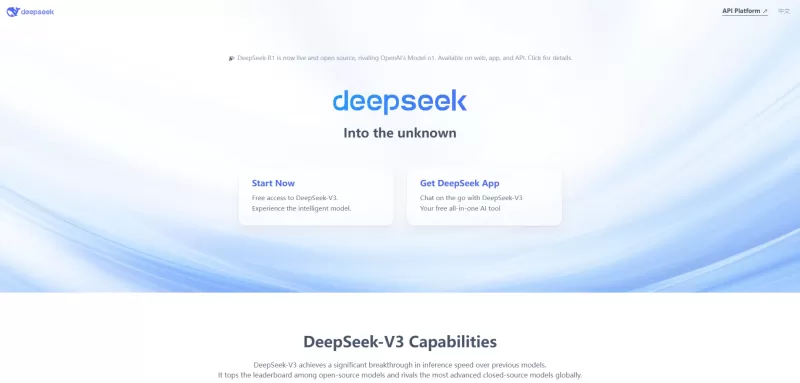UX and AI: Crafting Empathetic, Ethical Designs for User-Centric Experiences
In the ever-changing world of technology, the integration of User Experience (UX) design with Artificial Intelligence (AI) is becoming increasingly vital. As AI continues to weave itself into the fabric of our daily lives, its role in UX design offers both thrilling possibilities and intricate challenges. This article explores the dynamic role of AI in UX, highlighting the importance of empathy, ethics, and a user-centric focus. We'll discuss how designers can leverage AI's capabilities while maintaining responsible and user-friendly design practices. Our journey will touch on the current state and the promising future of the design industry, where AI serves as a collaborator, enhancing our capacity to craft meaningful and impactful user experiences.
Key Points
- AI's Role in UX Design: Understand how AI is evolving and impacting UX design.
- Ethical Considerations: Learn about the ethical challenges associated with AI implementation.
- User-Centric Design: Discover strategies to maintain a human-centered approach when using AI.
- Future Trends: Explore upcoming trends in the collaboration between UX and AI.
- Essential Skills: Identify critical skills for UX designers in this evolving landscape.
The Symbiotic Relationship Between UX and AI
What is the Role of AI in UX Design?
Artificial Intelligence is no longer just a futuristic idea; it's a tangible reality that's transforming industries and user experiences. In UX design, AI provides powerful tools for personalization, automation, and a deeper understanding of users. From predictive design to smart interfaces, the potential is vast. AI has been quietly influencing the products we use and how we perceive technology.

So, what exactly is AI doing in the world of UX? It's about personalization, where AI algorithms analyze user data to deliver customized content, recommendations, and interfaces, creating more engaging and relevant experiences. It's also about automation, which frees designers from repetitive tasks, allowing them to focus on more strategic and creative work. And then there's enhanced user understanding, where AI-powered analytics offer insights into user behavior, enabling data-driven decisions that improve usability.
This partnership between UX design and AI requires a delicate balance. Designers must harness AI's capabilities while ensuring that the resulting experiences remain intuitive, ethical, and user-centric. To craft the most effective designs, it's crucial to consider ethical guidelines.
Ethical Guidelines for AI Implementation in UX Design
Key Ethical Considerations
Integrating AI into UX design brings up significant ethical concerns that designers must address proactively. Ensuring ethical AI implementation is crucial for building trust and fostering positive user experiences.
- User Privacy: Protecting user data and ensuring privacy is paramount. Designers must be transparent about data collection practices and give users control over their information.
- Algorithmic Bias: Addressing and mitigating bias in AI algorithms is essential for fairness and inclusivity. Designers should strive to create systems that are equitable and do not discriminate against any user group.
- Transparency and Explainability: Making AI-driven decisions transparent and explainable helps users understand how the system works and builds trust. Designers should provide clear explanations of AI's reasoning and recommendations.
- Accessibility: AI-powered interfaces should be accessible to all users, regardless of their abilities or disabilities. Inclusive design practices are crucial for ensuring that AI benefits everyone.
By prioritizing ethical considerations, UX designers can ensure that AI is used responsibly and benefits all users.

Strategies for Responsible AI Implementation
To navigate the ethical challenges of AI in UX design, designers can adopt several strategies for responsible implementation. These strategies focus on user empowerment, transparency, and ethical decision-making.
- User Empowerment: Give users control over their AI experiences. Provide options to customize AI features, opt out of data collection, and provide feedback on AI performance.
- Transparency: Be transparent about how AI is used and its impact on the user experience. Provide clear explanations of AI's capabilities and limitations.
- Ethical Decision-Making: Incorporate ethical frameworks and guidelines into the design process. Consider the potential impact of AI on different user groups and prioritize fairness and inclusivity.
- Continuous Monitoring: Continuously monitor AI performance and address any issues that arise. Regularly evaluate AI algorithms for bias and make necessary adjustments to ensure fairness.
These strategies can help UX designers create AI-powered experiences that are not only effective but also ethical and user-friendly. Now, let's explore how to maintain a human-centered approach.
Promoting a Human-Centered Approach
Balancing AI and Human Touch
Maintaining a human-centered approach is crucial when integrating AI into UX design. While AI can analyze data, it lacks the empathy and emotional intelligence that humans bring to the design process. Understanding user needs, motivations, and emotions is essential for creating meaningful experiences.

Here are some strategies to strike a balance between AI's capabilities and the human touch:
- Empathy and Emotional Intelligence: AI can assist with data analysis, but designers must bring empathy and emotional intelligence to the design process. Understand user needs, motivations, and emotions to create meaningful experiences.
- Qualitative Research: Complement AI-powered analytics with qualitative research methods such as user interviews, usability testing, and ethnographic studies. Gather rich, contextual insights to inform design decisions.
- Iterative Design: Use an iterative design process that incorporates user feedback at every stage. Continuously refine AI-driven features based on user input and feedback.
- User Testing: Test AI-powered interfaces with diverse user groups to identify usability issues and ensure accessibility. Incorporate user feedback to improve the overall user experience.
By combining AI's analytical power with human-centered design principles, UX designers can create experiences that are both efficient and emotionally resonant. Remember that while AI can emulate user empathy, true empathy comes from humans.
AI-Powered UX Design Tools
The Future of UX and AI: Collaboration and Design
The future of UX design lies in the seamless integration of AI and human intelligence. By combining AI's capabilities with human-centered design principles, we can create experiences that are more intuitive, personalized, and effective.

As AI becomes a collaborative partner, UX designers will need to develop new skills and competencies. Embracing lifelong learning and staying current with emerging technologies will be crucial for success.
- Data Analysis: Proficiency in data analysis and interpretation will be essential for leveraging AI-powered analytics.
- Ethical Frameworks: Understanding ethical frameworks and guidelines will be critical for responsible AI implementation.
- Collaboration Skills: Strong collaboration skills will be needed to work effectively with AI developers, data scientists, and other stakeholders. It's important for humans to evaluate whether a project even needs AI and assess its impact on the user experience.
Balancing AI's Strengths and Weaknesses
Pros
- Enhanced Personalization
- Increased Efficiency
- Improved User Understanding
Cons
- Ethical Concerns
- Algorithmic Bias
- Potential for Job Displacement
The Landscape and Features of AI Design Softwares
AI Design Softwares
There's a wide variety of new software that designers are encouraged to use for better user experiences.
- Figma: It offers various AI tools for design assistance, including an AI tool to sort and generate templates.
- Stable Diffusion: This AI software is used for image development. It's great for seeking a particular look for a design project.

It's essential to consider how AI can augment your skills and enhance the design process.
Examples of AI Software Implementations in The Workforce
Real-World Use Cases of AI
Several successful projects demonstrate the positive impact of AI on UX design. Here are a few notable examples:
- Google Photos: This uses machine learning algorithms to automatically organize and tag photos, making it easier for users to find specific images quickly. It helps solve the problem of sifting through countless photos to find what you care about.
- Chatbots: AI-powered chatbots provide instant customer support, answer frequently asked questions, and guide users through complex tasks, helping users decide what they need.
When UX designers partner with AI, they can solve problems with a strong human-centric design approach.
FAQ
How does AI impact UX Design?
AI enhances UX design through personalization, automation, and improved user understanding, leading to more engaging and efficient user experiences.
How can I ensure ethical AI implementation in UX design?
By prioritizing user privacy, addressing algorithmic bias, promoting transparency, and fostering inclusive design practices.
What skills are essential for UX designers in the age of AI?
Proficiency in data analysis, understanding ethical frameworks, and strong collaboration skills are crucial for UX designers working with AI.
Related Questions
What is Prompt Engineering?
Prompt engineering is the art and science of crafting effective prompts for AI models, especially large language models (LLMs), to elicit desired responses. It involves carefully designing input queries that guide AI systems to generate accurate, relevant, and contextually appropriate outputs. In essence, prompt engineering is about communicating effectively with AI to unlock its full potential.
Related article
 Manus Debuts 'Wide Research' AI Tool with 100+ Agents for Web Scraping
Chinese AI innovator Manus, which previously gained attention for its pioneering multi-agent orchestration platform catering to both consumers and professional users, has unveiled a groundbreaking application of its technology that challenges convent
Manus Debuts 'Wide Research' AI Tool with 100+ Agents for Web Scraping
Chinese AI innovator Manus, which previously gained attention for its pioneering multi-agent orchestration platform catering to both consumers and professional users, has unveiled a groundbreaking application of its technology that challenges convent
 Why LLMs Ignore Instructions & How to Fix It Effectively
Understanding Why Large Language Models Skip Instructions
Large Language Models (LLMs) have transformed how we interact with AI, enabling advanced applications ranging from conversational interfaces to automated content generation and programming ass
Why LLMs Ignore Instructions & How to Fix It Effectively
Understanding Why Large Language Models Skip Instructions
Large Language Models (LLMs) have transformed how we interact with AI, enabling advanced applications ranging from conversational interfaces to automated content generation and programming ass
 Pebble Reclaims Its Original Brand Name After Legal Battle
The Return of Pebble: Name and AllPebble enthusiasts can rejoice - the beloved smartwatch brand isn't just making a comeback, it's reclaiming its iconic name. "We've successfully regained the Pebble trademark, which honestly surprised me with how smo
Comments (9)
0/200
Pebble Reclaims Its Original Brand Name After Legal Battle
The Return of Pebble: Name and AllPebble enthusiasts can rejoice - the beloved smartwatch brand isn't just making a comeback, it's reclaiming its iconic name. "We've successfully regained the Pebble trademark, which honestly surprised me with how smo
Comments (9)
0/200
![WillLopez]() WillLopez
WillLopez
 September 25, 2025 at 2:30:42 PM EDT
September 25, 2025 at 2:30:42 PM EDT
UX와 AI의 결합은 정말 흥미롭네요. 하지만 AI가 사용자의 감정을 얼마나 정확하게 이해할 수 있을까요? 🤔 조금 불안해지기도 하는데, 디자인 과정에서 윤리적 문제를 어떻게 해결할지 궁금해요.


 0
0
![HarperGreen]() HarperGreen
HarperGreen
 September 20, 2025 at 8:30:34 AM EDT
September 20, 2025 at 8:30:34 AM EDT
L'IA dans le UX c'est comme un couteau suisse : ça peut tout faire mais faut savoir s'en servir ! Parfois les designs 'intelligents' nous traitent comme des idiots... où est passé l'empathie promise ? 😅


 0
0
![HarryMartinez]() HarryMartinez
HarryMartinez
 August 5, 2025 at 1:00:59 AM EDT
August 5, 2025 at 1:00:59 AM EDT
This article really opened my eyes to how AI can shape UX design! 😮 The idea of empathetic tech is cool, but I wonder if companies will prioritize ethics over profits. Anyone else skeptical about this balance?


 0
0
![JoseLewis]() JoseLewis
JoseLewis
 July 30, 2025 at 9:41:20 PM EDT
July 30, 2025 at 9:41:20 PM EDT
This article really opened my eyes to how AI can make UX design more human-focused! 😊 It's wild to think about AI shaping empathetic interfaces, but I'm curious—how do we balance ethics with all this innovation?


 0
0
![DouglasPerez]() DouglasPerez
DouglasPerez
 April 26, 2025 at 4:01:20 PM EDT
April 26, 2025 at 4:01:20 PM EDT
¡UX y AI juntos? ¡Suena como un sueño para el diseño centrado en el usuario! Me encanta cómo esta herramienta ayuda a crear diseños empáticos y éticos. Es como tener un superpoder para crear mejores experiencias de usuario. Solo desearía que fuera un poco más intuitivo de usar. En general, una herramienta sólida! 🚀


 0
0
![BillyAdams]() BillyAdams
BillyAdams
 April 26, 2025 at 4:01:20 PM EDT
April 26, 2025 at 4:01:20 PM EDT
UX e IA juntos? Parece um sonho para o design centrado no usuário! Adoro como essa ferramenta ajuda a criar designs empáticos e éticos. É como ter um superpoder para criar melhores experiências de usuário. Só queria que fosse um pouco mais intuitivo de usar. No geral, uma ferramenta sólida! 🚀


 0
0
In the ever-changing world of technology, the integration of User Experience (UX) design with Artificial Intelligence (AI) is becoming increasingly vital. As AI continues to weave itself into the fabric of our daily lives, its role in UX design offers both thrilling possibilities and intricate challenges. This article explores the dynamic role of AI in UX, highlighting the importance of empathy, ethics, and a user-centric focus. We'll discuss how designers can leverage AI's capabilities while maintaining responsible and user-friendly design practices. Our journey will touch on the current state and the promising future of the design industry, where AI serves as a collaborator, enhancing our capacity to craft meaningful and impactful user experiences.
Key Points
- AI's Role in UX Design: Understand how AI is evolving and impacting UX design.
- Ethical Considerations: Learn about the ethical challenges associated with AI implementation.
- User-Centric Design: Discover strategies to maintain a human-centered approach when using AI.
- Future Trends: Explore upcoming trends in the collaboration between UX and AI.
- Essential Skills: Identify critical skills for UX designers in this evolving landscape.
The Symbiotic Relationship Between UX and AI
What is the Role of AI in UX Design?
Artificial Intelligence is no longer just a futuristic idea; it's a tangible reality that's transforming industries and user experiences. In UX design, AI provides powerful tools for personalization, automation, and a deeper understanding of users. From predictive design to smart interfaces, the potential is vast. AI has been quietly influencing the products we use and how we perceive technology.

So, what exactly is AI doing in the world of UX? It's about personalization, where AI algorithms analyze user data to deliver customized content, recommendations, and interfaces, creating more engaging and relevant experiences. It's also about automation, which frees designers from repetitive tasks, allowing them to focus on more strategic and creative work. And then there's enhanced user understanding, where AI-powered analytics offer insights into user behavior, enabling data-driven decisions that improve usability.
This partnership between UX design and AI requires a delicate balance. Designers must harness AI's capabilities while ensuring that the resulting experiences remain intuitive, ethical, and user-centric. To craft the most effective designs, it's crucial to consider ethical guidelines.
Ethical Guidelines for AI Implementation in UX Design
Key Ethical Considerations
Integrating AI into UX design brings up significant ethical concerns that designers must address proactively. Ensuring ethical AI implementation is crucial for building trust and fostering positive user experiences.
- User Privacy: Protecting user data and ensuring privacy is paramount. Designers must be transparent about data collection practices and give users control over their information.
- Algorithmic Bias: Addressing and mitigating bias in AI algorithms is essential for fairness and inclusivity. Designers should strive to create systems that are equitable and do not discriminate against any user group.
- Transparency and Explainability: Making AI-driven decisions transparent and explainable helps users understand how the system works and builds trust. Designers should provide clear explanations of AI's reasoning and recommendations.
- Accessibility: AI-powered interfaces should be accessible to all users, regardless of their abilities or disabilities. Inclusive design practices are crucial for ensuring that AI benefits everyone.
By prioritizing ethical considerations, UX designers can ensure that AI is used responsibly and benefits all users.

Strategies for Responsible AI Implementation
To navigate the ethical challenges of AI in UX design, designers can adopt several strategies for responsible implementation. These strategies focus on user empowerment, transparency, and ethical decision-making.
- User Empowerment: Give users control over their AI experiences. Provide options to customize AI features, opt out of data collection, and provide feedback on AI performance.
- Transparency: Be transparent about how AI is used and its impact on the user experience. Provide clear explanations of AI's capabilities and limitations.
- Ethical Decision-Making: Incorporate ethical frameworks and guidelines into the design process. Consider the potential impact of AI on different user groups and prioritize fairness and inclusivity.
- Continuous Monitoring: Continuously monitor AI performance and address any issues that arise. Regularly evaluate AI algorithms for bias and make necessary adjustments to ensure fairness.
These strategies can help UX designers create AI-powered experiences that are not only effective but also ethical and user-friendly. Now, let's explore how to maintain a human-centered approach.
Promoting a Human-Centered Approach
Balancing AI and Human Touch
Maintaining a human-centered approach is crucial when integrating AI into UX design. While AI can analyze data, it lacks the empathy and emotional intelligence that humans bring to the design process. Understanding user needs, motivations, and emotions is essential for creating meaningful experiences.

Here are some strategies to strike a balance between AI's capabilities and the human touch:
- Empathy and Emotional Intelligence: AI can assist with data analysis, but designers must bring empathy and emotional intelligence to the design process. Understand user needs, motivations, and emotions to create meaningful experiences.
- Qualitative Research: Complement AI-powered analytics with qualitative research methods such as user interviews, usability testing, and ethnographic studies. Gather rich, contextual insights to inform design decisions.
- Iterative Design: Use an iterative design process that incorporates user feedback at every stage. Continuously refine AI-driven features based on user input and feedback.
- User Testing: Test AI-powered interfaces with diverse user groups to identify usability issues and ensure accessibility. Incorporate user feedback to improve the overall user experience.
By combining AI's analytical power with human-centered design principles, UX designers can create experiences that are both efficient and emotionally resonant. Remember that while AI can emulate user empathy, true empathy comes from humans.
AI-Powered UX Design Tools
The Future of UX and AI: Collaboration and Design
The future of UX design lies in the seamless integration of AI and human intelligence. By combining AI's capabilities with human-centered design principles, we can create experiences that are more intuitive, personalized, and effective.

As AI becomes a collaborative partner, UX designers will need to develop new skills and competencies. Embracing lifelong learning and staying current with emerging technologies will be crucial for success.
- Data Analysis: Proficiency in data analysis and interpretation will be essential for leveraging AI-powered analytics.
- Ethical Frameworks: Understanding ethical frameworks and guidelines will be critical for responsible AI implementation.
- Collaboration Skills: Strong collaboration skills will be needed to work effectively with AI developers, data scientists, and other stakeholders. It's important for humans to evaluate whether a project even needs AI and assess its impact on the user experience.
Balancing AI's Strengths and Weaknesses
Pros
- Enhanced Personalization
- Increased Efficiency
- Improved User Understanding
Cons
- Ethical Concerns
- Algorithmic Bias
- Potential for Job Displacement
The Landscape and Features of AI Design Softwares
AI Design Softwares
There's a wide variety of new software that designers are encouraged to use for better user experiences.
- Figma: It offers various AI tools for design assistance, including an AI tool to sort and generate templates.
- Stable Diffusion: This AI software is used for image development. It's great for seeking a particular look for a design project.

It's essential to consider how AI can augment your skills and enhance the design process.
Examples of AI Software Implementations in The Workforce
Real-World Use Cases of AI
Several successful projects demonstrate the positive impact of AI on UX design. Here are a few notable examples:
- Google Photos: This uses machine learning algorithms to automatically organize and tag photos, making it easier for users to find specific images quickly. It helps solve the problem of sifting through countless photos to find what you care about.
- Chatbots: AI-powered chatbots provide instant customer support, answer frequently asked questions, and guide users through complex tasks, helping users decide what they need.
When UX designers partner with AI, they can solve problems with a strong human-centric design approach.
FAQ
How does AI impact UX Design?
AI enhances UX design through personalization, automation, and improved user understanding, leading to more engaging and efficient user experiences.
How can I ensure ethical AI implementation in UX design?
By prioritizing user privacy, addressing algorithmic bias, promoting transparency, and fostering inclusive design practices.
What skills are essential for UX designers in the age of AI?
Proficiency in data analysis, understanding ethical frameworks, and strong collaboration skills are crucial for UX designers working with AI.
Related Questions
What is Prompt Engineering?
Prompt engineering is the art and science of crafting effective prompts for AI models, especially large language models (LLMs), to elicit desired responses. It involves carefully designing input queries that guide AI systems to generate accurate, relevant, and contextually appropriate outputs. In essence, prompt engineering is about communicating effectively with AI to unlock its full potential.
 Manus Debuts 'Wide Research' AI Tool with 100+ Agents for Web Scraping
Chinese AI innovator Manus, which previously gained attention for its pioneering multi-agent orchestration platform catering to both consumers and professional users, has unveiled a groundbreaking application of its technology that challenges convent
Manus Debuts 'Wide Research' AI Tool with 100+ Agents for Web Scraping
Chinese AI innovator Manus, which previously gained attention for its pioneering multi-agent orchestration platform catering to both consumers and professional users, has unveiled a groundbreaking application of its technology that challenges convent
 Why LLMs Ignore Instructions & How to Fix It Effectively
Understanding Why Large Language Models Skip Instructions
Large Language Models (LLMs) have transformed how we interact with AI, enabling advanced applications ranging from conversational interfaces to automated content generation and programming ass
Why LLMs Ignore Instructions & How to Fix It Effectively
Understanding Why Large Language Models Skip Instructions
Large Language Models (LLMs) have transformed how we interact with AI, enabling advanced applications ranging from conversational interfaces to automated content generation and programming ass
 Pebble Reclaims Its Original Brand Name After Legal Battle
The Return of Pebble: Name and AllPebble enthusiasts can rejoice - the beloved smartwatch brand isn't just making a comeback, it's reclaiming its iconic name. "We've successfully regained the Pebble trademark, which honestly surprised me with how smo
Pebble Reclaims Its Original Brand Name After Legal Battle
The Return of Pebble: Name and AllPebble enthusiasts can rejoice - the beloved smartwatch brand isn't just making a comeback, it's reclaiming its iconic name. "We've successfully regained the Pebble trademark, which honestly surprised me with how smo
 September 25, 2025 at 2:30:42 PM EDT
September 25, 2025 at 2:30:42 PM EDT
UX와 AI의 결합은 정말 흥미롭네요. 하지만 AI가 사용자의 감정을 얼마나 정확하게 이해할 수 있을까요? 🤔 조금 불안해지기도 하는데, 디자인 과정에서 윤리적 문제를 어떻게 해결할지 궁금해요.


 0
0
 September 20, 2025 at 8:30:34 AM EDT
September 20, 2025 at 8:30:34 AM EDT
L'IA dans le UX c'est comme un couteau suisse : ça peut tout faire mais faut savoir s'en servir ! Parfois les designs 'intelligents' nous traitent comme des idiots... où est passé l'empathie promise ? 😅


 0
0
 August 5, 2025 at 1:00:59 AM EDT
August 5, 2025 at 1:00:59 AM EDT
This article really opened my eyes to how AI can shape UX design! 😮 The idea of empathetic tech is cool, but I wonder if companies will prioritize ethics over profits. Anyone else skeptical about this balance?


 0
0
 July 30, 2025 at 9:41:20 PM EDT
July 30, 2025 at 9:41:20 PM EDT
This article really opened my eyes to how AI can make UX design more human-focused! 😊 It's wild to think about AI shaping empathetic interfaces, but I'm curious—how do we balance ethics with all this innovation?


 0
0
 April 26, 2025 at 4:01:20 PM EDT
April 26, 2025 at 4:01:20 PM EDT
¡UX y AI juntos? ¡Suena como un sueño para el diseño centrado en el usuario! Me encanta cómo esta herramienta ayuda a crear diseños empáticos y éticos. Es como tener un superpoder para crear mejores experiencias de usuario. Solo desearía que fuera un poco más intuitivo de usar. En general, una herramienta sólida! 🚀


 0
0
 April 26, 2025 at 4:01:20 PM EDT
April 26, 2025 at 4:01:20 PM EDT
UX e IA juntos? Parece um sonho para o design centrado no usuário! Adoro como essa ferramenta ajuda a criar designs empáticos e éticos. É como ter um superpoder para criar melhores experiências de usuário. Só queria que fosse um pouco mais intuitivo de usar. No geral, uma ferramenta sólida! 🚀


 0
0





























